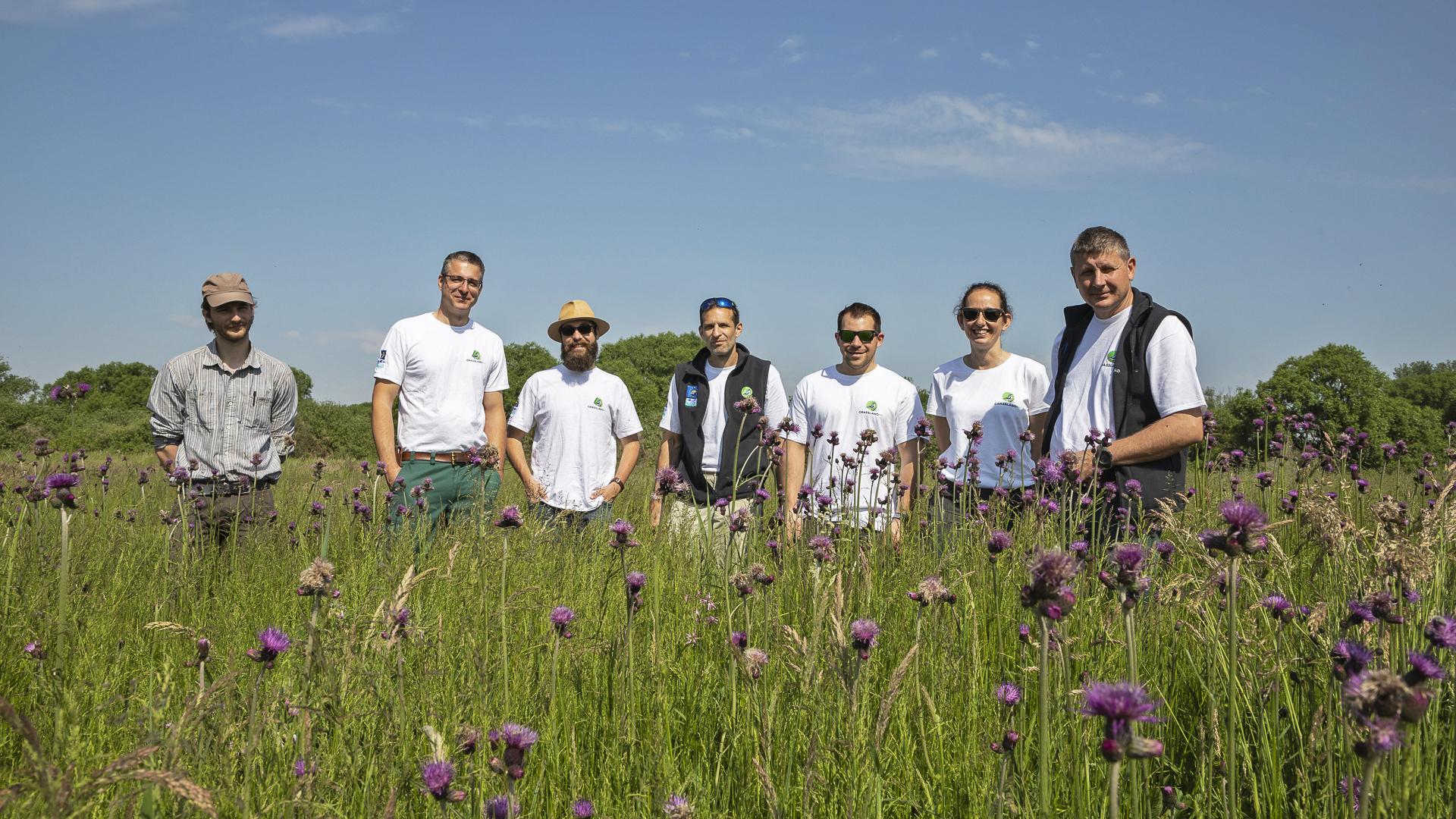Springtime field visits to Grassland-HU project areas

This spring, colleagues from the Hortobágy National Park Directorate again visited the sites of the Grassland-HU LIFE integrated . The project aims the long-term conservation of Pannonian grasslands and related habitats. After the spring rains, our project areas are beginning to regain their original habitat associations, thanks to various habitat management activities.
Within the territory of the Hortobágy National Park Directorate (HNPD), four project areas with different characteristics have been designated in the national scale programme, three of which are located in Szatmár-Bereg (Kaszonyi-hegy in Barabás, fülesdi marshland, Hetefejércssei pasture) and one in Nyírség (Daru-rét in Petneház), covering a total area of 169 hectares.
This year, thanks to various restoration works carried out in recent years, the Daru-rét has returned to its more natural state. The eradication of shrubs and reeds on some 36 hectares, and the regular stem-crushing of goldenrod (Solidago spp.), have already reduced the presence of the highly protected marsh angelica (Angelica palustris), the protected magnificent bog orchid (Anacamptis palustris subsp. elegans), Early Marsh-Orchid, (Dactylorhiza incarnata), Fringed Pink (Dianthus superbus) and the butterfly Scarce large blue (Maculinea teleius). In fact, 17 hectares of grassland formerly used as ploughland are now contiguous grasslands.
The Kaszonyi-hegy Nature Reserve, on the outskirts of the village of Barabás, is a special and very unique area of the HNPD. After the clearing of the project area (about 34 ha) in the former wild vineyard plots on the hill, which were covered with vines and interconnected shrubs, the grass planting carried out last spring and late autumn has undergone a very spectacular change. Fortunately, the planted tree seedlings of landscape fruit varieties have been preserved thanks to continued care.
The clearing of the desert false indigo and grass planting efforts of 2.5 hectares of Füzesd Marsh has shown a picturesque sight after the spring rains. Thanks to a special grass seed mixture sown at an excellent time, the vegetation has grown to a metre in height, creating a grassland area that is already of great conservation value. The neglected grassland left behind in the former rice fields in the northern part of the marsh was unrecognisable. The professional intervention on more than 22 hectares has produced the expected results, thanks in part to the concrete water retention structure created in the Cibere channel. It is hoped that soon the Scarce large blue (Maculinea sp., more recently known as Phengaris sp.) and their forage plants, the marsh gentian (Gentiana pneumonanthe) and the great burnet (Sanguisorba officinalis), will be introduced from the remaining natural areas adjacent to the grassland.
Unfortunately, the day trip did not include time to visit their fourth project site, the Hetefejérce pasture, which is rich in hog's fennel (Peucedanum officinale) and the ecologicaly connected Fisher's Estuarine Moth (Gortyna borelii). However, thanks to year-round intermittent grazing, the conservation of the area is on the right track. And the mobile electric fence system will soon be put in place.
At the project sites, the priority will slowly shift to site maintenance, conservation and monitoring of the work carried out so far. Naturally, this task will also involve staff from the HNPD1s Rager Sevice and the Grassland Conservation Management Advisory Service.
Source: Hortobágy National Park Directorate